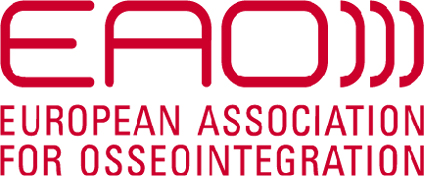Risks and complications
Discussion
One of the more frequent causes of complications is poor implant positioning. At what point should we decide to remove the implant?
When malposition is suspected during implant placement, the best thing to do is remove it immediately. The difficulty and biological cost of removing an implant once osseointegration has occurred are very high. To remove a poorly positioned implant we should first try to reverse the torque (using the appropriate instrument kit for the implant brand). Generally speaking, this manoeuvre has a success rate of around 25%. In the other 75% of cases, we need to raise a flap and drill the bone at the implant side in the most conservative way possible. Trephine is not recommended as it allows more bone to become damaged and often necrotic through overheating. Regardless, once the implant has been removed, it is recommended that a healing period of five weeks is observed before placing a new one in the proper position.
To prevent peri-implantitis, would a polished transmucosal neck be beneficial?
A polished neck is only one of multiple factors that may affect the risk of peri-implantitis. In theory, a polished surface is easier to clean and should have less plaque accumulation, but there are some implants which have a polished neck but still encounter peri-implantitis. Other factors must be considered. If the trans-gingival area is not healthy, or the implant is placed too deep, or there is a sub-optimal connection, then peri-implantitis is also going to occur.
Would zirconia implants be less prone to peri-implantitis?
It is been claimed that zirconia promotes less biofilm adherence in vitro, but we cannot conclude from this that there is a lower incidence of peri-implantitis in zirconia implants. There is still limited clinical data on zirconia implants, so we really cannot give a definitive answer.
Zirconia implants are still associated with peri-implantitis, and do not have better results than titanium implants. Apart from implantoplasty – which is not possible with zirconia implants – the treatment approach is the same as when working titanium.
Is it feasible to think that an anti-infection implant surface will be available in the future?
It is a nice dream. There is lot of active research being carried out in this direction and it is possible that positive results will be available in the near future.
Are all surface decontamination methods comparable?
The most important thing to bear in mind is that low-tech methods which are simpler and cheaper work in a similar way to the sophisticated and expensive high-tech techniques (like lasers). The results are indeed comparable.
Is the incidence of chipping in zirconia restorations similar to metal-ceramic restorations?
Zirconia reconstructions are still in a development phase. The incidence of chipping on zirconia is similar to (or even greater than) metal-ceramic reconstructions. Thus, for cases involving full-arch reconstruction, the speaker said they prefer to use metal-ceramic restorations.
Does framework misfit have any influence over osseointegration?
Finite element models show force transmission between bone/implant interfaces. The results can be applied to the technical field, but it is hard to draw conclusions from these in relation to bone. However, it is reasonable to hypothesise that cortical bone can be lost from an intense concentration of forces and that the modified implant surface may be exposed to the oral environment, predisposing it to peri-implant disease. But this cannot be attributed to misfit alone.



